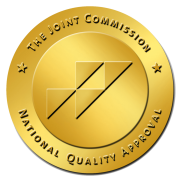Recovery at Home: Where Long-Term Sobriety Happens
Sober practices and recovery skills need to be applied directly at home and in real life. Recovery is much more than understanding the problem and helpful solutions. Recovery is behaving and practicing newly learned skills at home. Recovery is avoiding and/or coping with relapse triggers which occur in daily life.
The protection an inpatient or residential treatment program provides may eventually guard against necessary real-world practice of recovery. Early sobriety stresses, triggers and “wreckage” at home are best approached with the support and guidance of an intensive outpatient program and peer group.
Many people who have been discharges from an inpatient or residential setting without the continuing support of outpatient drug and alcohol rehab often relapse. They find that they aren’t prepared for sober independent decision making and action. Relapse triggers and wreckage are encountered without the support of a peer group or intensive outpatient treatment program (IOP).
Many people think that “drug and alcohol rehab” means spending a lot of time and money to move into a treatment center. The actual advantages of traveling a distance from home to start recovery is challenged by the evidence and experience with intensive outpatient treatment. Long-term recovery happens at home.
Rather than avoiding the daily triggers and wreckage which are part of drug or alcohol abuse (use disorders), intensive outpatient treatment (IOP) guides participants through the toughest times in the real world, when support is needed most. Rather than moving away from life’s problems, intensive outpatient treatment for addiction integrates recovery skill into real world, at-home practice.
Sometimes “containment” or submitting to the control of an inpatient setting is necessary. Once a person is medically and psychologically stabilized, the life-long practice of making sober choices begins. Reliance on environmental and supervisory constraints eventually needs to be surrendered as a free and sober life begins. In recovery, voluntarily making sober choices in the real world requires practice.
In intensive outpatient treatment (IOP) participants are coached to apply principals of recovery in their personal lives. The ultimate choice for sobriety eventually becomes an independent and growing drive for wellness. It becomes an essential ingredient in daily life.
Residential or inpatient treatment may be required where medical detox is needed, or to protect a participant encountering behavioral or psychiatric disorders. Sometimes the drive to use is so great that a sober living situation apart from the home environment becomes necessary. A sober living rental with others in recovery can be useful while people attend an intensive outpatient program (IOP) or while early recovery is being maintained.
Financial, occupational and relationship damages have often been encountered during the progression of drug and alcohol abuse (use disorder). The time and expense of treatment should not add to these stressors. They can add to the challenge to stay sober.
Many people may not have the resources to pay for residential treatment costs not covered by insurance. Increasingly, insurers pay for only a portion of a residential treatment stay. If residential treatment is medically necessary, it’s vital that the participant and family get a written estimate of the likely costs they will encounter. Before you commit to inpatient treatment, make sure that you are informed and prepared for whatever payment and payment planning is required.
(1) “Subjects benefited equally from outpatient and residential aftercare, regardless of the severity of their drug/alcohol problem.” Differential effectiveness of residential versus outpatient aftercare for parolees from prison-based therapeutic community treatment programs. William M Burdon1, Jeff Dang2, Michael L Prendergast1, Nena P Messina1 and David Farabee 1, *Corresponding author: William M Burdon wburdon@ucla.edu, 1University of California, Los Angeles, Integrated Substance Abuse Program, Substance Abuse Treatment, Prevention, and Policy 2007, 2:16 doi:10.1186/1747-597X-2-16
“Previous reviews have concluded that there was no evidence for the superiority of inpatient over outpatient treatment of alcohol abuse, although particular types of patients might be more effectively treated in inpatient settings. We consider the implications of our findings for future research, especially the need to examine the conceptual rationales put forward by proponents of inpatient and outpatient treatment, i.e. mediators and moderators of setting effects.” The effectiveness of inpatient and outpatient treatment for alcohol abuse: the need to focus on mediators and moderators of setting effects, JOHN W. FINNEY, ANNETTE C. HAHN, RUDOLF H. MOOS Article first published online: 24 JAN 2006 DOI: 10.1046/j.1360-0443.1996.911217733.x Addiction Volume 91, Issue 12, pages 1773–1796, December 1996
“Greater service intensity and satisfaction were positively related to either treatment completion or longer treatment retention, which in turn was related to favorable treatment outcomes. Patients with greater problem severity received more services and were more likely to be satisfied with treatment. These patterns were similar for patients regardless of whether they were treated in outpatient drug-free programs or residential programs. The positive association between … greater levels of service intensity, satisfaction, and either treatment completion or retention-and treatment outcome strongly suggests that improvements in these key elements of the treatment process will improve treatment outcomes.” Relationship between drug treatment services, retention, and outcomes. Hser YI, Evans E, Huang D, Anglin DM. Neuropsychiatric Institute, University of California-Los Angeles, 1640 South Sepulveda Boulevard, Los Angeles, CA 90025, USA. yhser@ucla.edu
National studies indicate significant reductions in recidivism following outpatient treatment Pre-treatment Post-treatment, Drug Abuse Reporting Program (DARP), National Treatment Improvement Evaluation Study (NTIES), Treatment Outcome Prospective Study (TOPS)
Outpatient treatment of probationers leads to fewer arrests at 12 and 24-month follow-up (Lattimore et al., 2005) vs. untreated probationers
High-risk probationers receiving outpatient treatment experience 10-20% reductions in recidivism (Petersilia & Turner, 1990, 1993)
Reductions in probationer recidivism durable for 72 months after outpatient treatment (Krebs et al., 2009)
Outpatient treatment more effective than residential treatment for drug-involved probationers (Krebs et al., 2009) and during reentry (Burdon et al., 2004)
Greater benefits for the cost for outpatient treatment in non-offender samples (CALDATA, French et al., 2000, 2002)
Aftercare services among drug-involved offenders can significantly reduce substance use and re-arrest (Butzin et al., 2006)
Outpatient aftercare services can reduce likelihood of re-incarceration by 63% (Burdon et al., 2004)
Aftercare services provide $4.4 – $9 return for every dollar invested (Roman & Chafing, 2006)
“…(M)ore severe patients experienced better alcohol and drug outcomes following in-patient/residential treatment versus out-patient treatment; on the other hand, patients with lower baseline ASI drug severity had better drug outcomes following out-patient treatment than in-patient treatment. Treatment setting was unrelated to alcohol outcomes in patients with less severe ASI alcohol scores. Conclusions Results provide some support to the matching hypothesis that for patients who have higher levels of substance use severity at intake, treatment in in-patient/residential treatment settings is associated with better outcomes than out-patient treatment.” Day Hospital and Residential Addiction Treatment: Randomized and Nonrandomized Managed Care Clients; Jane Witbrodt, Jason Bond, and Lee Ann Kaskutas Alcohol Research Group, Constance Weisner, University of California, San Francisco, Gary Jaeger; Kaiser Foundation Hospital, David Pating, Kaiser San Francisco Medical Center, Charles Moore Sacramento Kaiser Permanente, Journal of Consulting and Clinical Psychology Copyright 2007 by the American Psychological Association, 2007, Vol. 75, No. 6, 947–95
“Compared to those receiving no treatment, those receiving nonresidential treatment took longer to fail or recidivate. However, those receiving residential treatment did not differ from those who received no treatment in time to failure. In the treatment-only model, nonresidential treatment participants took longer to fail than their matched residential treatment counterparts.” The impact of residential and nonresidential drug treatment on recidivism among drug-involved probationers: A survival analysis. Krebs, C. P., Strom, K. J., Koetse, W. H., & Lattimore, P. K. (2009). Crime & Delinquency, 55, 442-471.


